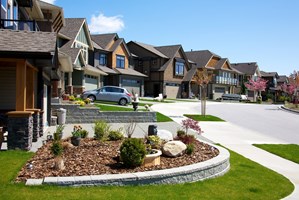While they have become ubiquitous with the emergence of suburban neighborhoods and townhouses, homeowners associations (HOA, for short) are a relatively new phenomenon.
In modern America, there are many ways to live: apartments, condominiums, houses, townhouses, and now even “tiny houses” are gaining traction. But it wasn’t until the late 1900s that property owners began to experiment with alternative ways of living that revolved around share, “common spaces.”
What constitutes a common area?
Whether you live in an apartment, a house, or in your RV you likely experience common areas every day that are owned by the government. Roads, bridges, and parks are all common areas in that they are used by multiple people and their upkeep is paid for with taxes.
If you take that analogy and apply it to the greenways and lobbies of a condominium, or the streets and sidewalks of a gated community, there are few differences.
What is a homeowners association?
When a developer plans a new community they will often create a homeowners association that will be managed by the people who move into the houses or condominiums. Once a certain number of people have moved into the development and joined the HOA the developer will typically hand over ownership to the HOA and relinquish their legal rights and responsibilities of the land. From there, the HOA typically has complete control over management. Though it should be noted that states have their own HOA related laws with varying levels of oversight.
What does an HOA do?
The most common thing we associate with HOAs is fees and rules. People who move into a community governed by a homeowners association are typically required to join the HOA and are therefore obligated to pay fees and adhere to the guidelines set down by the HOA board.
The fees you pay will go towards maintenance and development of the common areas of your community. That usually amounts to landscaping, maintaining pools and fitness complexes. Fees can range from anywhere between $200 and $450 per month depending on where you live.
HOAs also enforce regulations that homeowners must follow. These vary depending on the community but often include building restrictions for things like fences and additions, as well as other ways that homeowners can customize their homes such as paint and vinyl color. Some homeowners associations go so far as to regulate whether or not a homeowner may fly the flag on their favorite sports team over their door.
Advantages and disadvantages
So what are the advantages and disadvantages you can expect when you belong to a homeowners association? Let’s start with the clear disadvantages. If you are a tinkerer or someone who relishes the freedom to do what they want with their property, living in an HOA-run community might not be right for you. If your salary isn’t quite what you’d like it to be, the cost of living in an HOA neighborhood, along with the monthly fees, might be a bit more than you’re comfortable with.
What about the advantages? First, you can expect that the neighborhood will be well-maintained. This brings about another advantage in that you can expect your property value to grow or at least remain stable thanks to the quality of the neighborhood being carefully managed.

